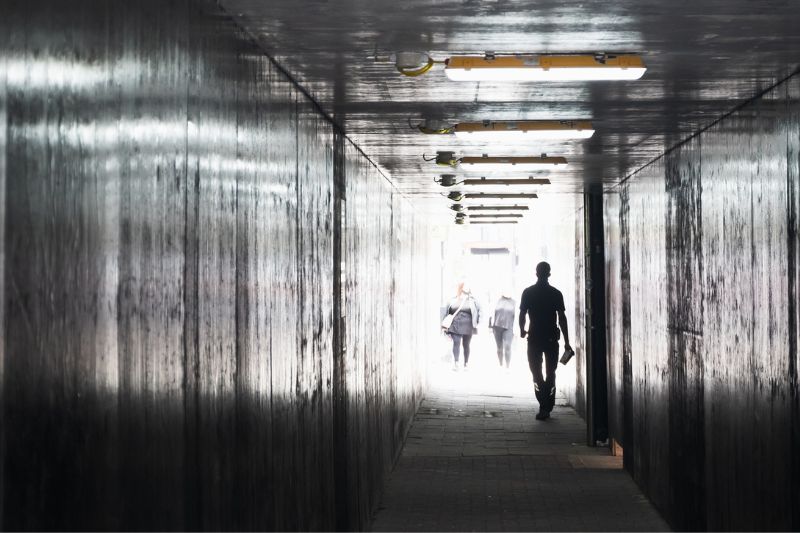Townsville has been in the news recently for stories on youth crime and for warnings about a vigilante response to it. People had been urged to gather outside the homes of young Indigenous people suspected of anti-social behaviour. Such events exacerbate the anxiety, fear and anger of both majority and minority communities, and are distressingly common. The reference to vigilante behaviour however, is new and deserves broader reflection. In any culture vigilante action is a sign of pressure on the law and other institutions that protect fraternity in society. This stress is usually accompanied by defects in liberty and equality which, along with fraternity (perhaps better called solidarity and so include sorority), are the received elements of democracy.

Vigilantes go back a long way. Like most regrettable forms of behaviour, their deeds are mentioned among the payback outside of the law described in the early books of the Old Testament. They are also central to the plot of the Iliad. The word ‘vigilante’ originally described a watcher. The watcher or sentinel during the night enabled the townsfolk to sleep, confident that they would be safe from invaders. Watchers served the community. Their service and intent were fraternal.
Watching then and now, however, has been ambiguous. To be watched over is a gift. To be watched can be disconcerting. It makes us feel like an object and fear evil intentions in the watcher. The elders who looked with lust at Susannah in the garden and the Pharisees who watched Jesus wherever he went were threatening figures. In our society we would call such attention voyeurism or stalking. It is not fraternal but hostile. It does not keep society together but violates the respect on which sociality is built.
If watching in general is ambiguous, the kind of watching involved in vigilantism is ambivalent. By definition, it implies keeping a close eye on one’s society and attending to threats to its peace. This aspect is fraternal and commendable. The focus of the vigilante, however, is not on the good of the whole community but on punishing a distinctive marginal group in the community seen as reprobate. That aspect is divisive and hostile. Although vigilantes may claim in good faith to act on behalf of society, in fact they harm it by enlarging divisions and appealing to hatred. Whereas fraternity is marked by meeting, connecting, listening and finding empathy, vigilantism is marked by hatred, contempt and exclusion. Vigilantes weaken the public institutions and conventions of fraternity by acting without warrant. The lynchings that became the symbol of vigilantism in the United States were a liturgy of hatred and contempt. Vigilantism spreads fear, not reassurance. Its roots lie in hostility, not in benevolence.
At least in its non-digital manifestations, the vigilante gaze is also predominantly male. Most vigilantes who plan and take action against presumed wrongdoers are male. More significantly, in their behaviour and their language, too, they exhibit the qualities associated with a brittle form of masculinity – an expectation of toughness and decisiveness associated with fear of acknowledging weakness, readiness to resort to violence when feeling frustration, a lack of empathy, and with defining relationships in terms of power rather than of mutual understanding. This stunted form of masculinity is also a major factor in the prevalence of domestic violence.
'Vigilantes weaken the public institutions and conventions of fraternity by acting without warrant. The lynchings that became the symbol of vigilantism in the United States were a liturgy of hatred and contempt. Vigilantism spreads fear, not reassurance. Its roots lie in hostility, not in benevolence.'
In Australia, the risk that vigilantism will become endemic is small. But its presence in demonstrations directed against minority groups is a sign that fraternity is under pressure. The threat to fraternity is associated with the growing inequality in Australian society between the very wealthy and others, between powerful corporations and small businesses, and between those who own property and those who struggle to pay mortgages, to rent or to find shelter. Entrenched and massive inequality breeds resentment in those who live precariously. In politics the target of resentment can be diverted into to such minority groups as migrants, refugees or Indigenous Australians. The fractures in public life in the United States reveals the dangers of this manipulation of inequality.
Fraternity is also put under pressure by an understanding of freedom that focuses on the isolated individual and on their entitlements. It neglects the gifts and responsibilities that they receive as members of society. This view of human beings as isolated individuals who must compete to realise their goals encourages a view of economic progress that treats employees as a cost, and not as persons with whom employers share a common humanity and responsibility to society. Disputes will then be resolved by power and not by conversation among equals. In this world fraternity has little place.
If we focus on freedom as the right to shape our own lives without reference to society, we are likely to see the laws and conventions that protect a fraternal society as an imposition and not as the framework within which we can shape our lives. We canonise the exercise of power as the way to reconstruct society in a way that fits our desires. This view of society as manipulable by power and wealth will inevitably breed resentment among those who feel excluded from it. Without a commitment to fraternity that transcends individual desires, both the equality and liberty on which fraternity rests will be eroded. The weakening of the structures of fraternity will inevitably find expression in defiance of law, in reliance on punishment to meet it, and in vigilante and other action. Then we might ask as did the prophets in the face of the Assyrian threat, ‘Watchman, what of the night?’
Andrew Hamilton is consulting editor of Eureka Street, and writer at Jesuit Social Services.
Main image: Man walking through tunnel. (Getty Images).